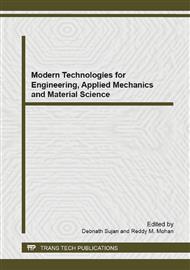p.117
p.122
p.127
p.132
p.137
p.142
p.147
p.152
p.159
Study of Ultra High Performance Fiber Reinforced Concrete with Expansive and Shrinkage Reducing Agents
Abstract:
UltraHigh Performance Fiber Reinforced Concrete (UHPFRC) exhibits remarkable mechanical performance, which can allow to reduce the cross-section of structural members. However,a problem involving UHPFRC isthe likely tendency to crack at early age, due to autogenous and plastic shrinkages, caused by the very low water-to-binder ratio adopted. Therefore, this experimental work intends to detect the effectiveness of a possible solution for reducing the risk of shrinkage cracks in UHPFRC, by adding to the mixture a suitable combination of expansive and shrinkage reducing agents.Compressionand bending testswere carried out up to28 days of curing. Free drying shrinkage strains were evaluated up to 56 days of exposure to 50% relative humidity. The experimental results obtained by using expansive and shrinkage reducing agents were extremely encouraging in termsof free dryingshrinkage reduction, and even surprising in terms of flexural behaviour.
Info:
Periodical:
Pages:
137-141
Citation:
Online since:
June 2014
Authors:
Price:
Сopyright:
© 2014 Trans Tech Publications Ltd. All Rights Reserved
Share:
Citation:


